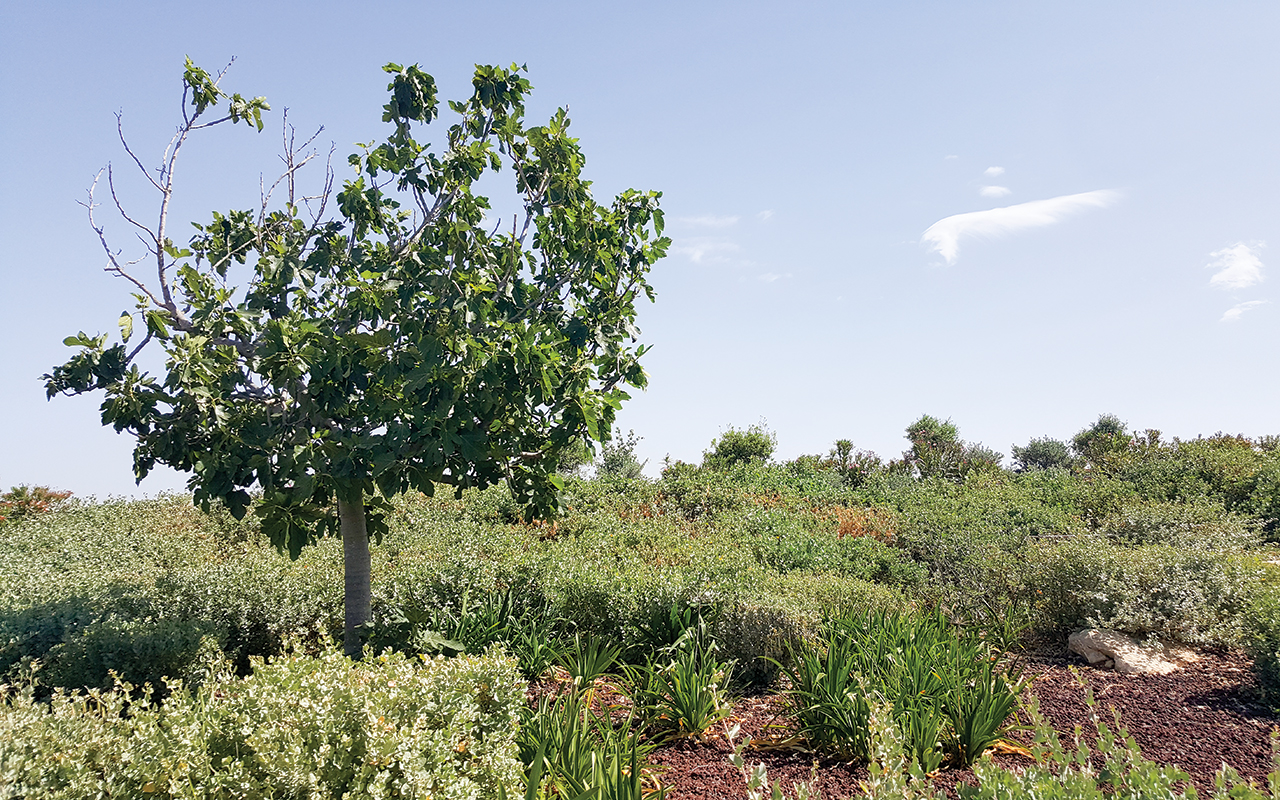
Fig
Ficus carica L.
Moraceae
The scientific name for fig consists of Ficus, a word believed to originate from the Semitic word for fig, and carica, the name of an ancient Roman province in southwestern Turkey. Fig trees are deciduous and may grow to about six metres with alternate leaves. The tree bears green, unisexual flowers that form as an inflorescence inside a hollow fleshy structure (the syconium) that later becomes the fruit. New trees are normally planted in winter.
Figs are planted in most Palestinian cities. However, it is most common in two districts, Nablus — especially in the village of Tell — and Ramallah — namely in Silwad, which became known as Im-Qutteen (mother of dried figs). Other villages also have names relating to the fig, such as Teeneh (fig). There are also flat areas called masateeh referring to the places where figs are dried to produce qutteen. Despite this, fig production is low in Palestine.
There are many kinds of fig, including anaqi, suwwadi, ihmari, ihmadi, imwazi, ikhdari, khartamani, kharubi and ajlouni, most of which are suitable for drying into qutteen. Most figs have two picking seasons. The first, in May and June, is called dafoor, and has a modest yield. The main crop begins in July. Figs are highly nutritious because they contain high levels of certain vitamins, minerals, fibre and antioxidants, in addition to a high glucose content.
The fig has long been linked to Palestinian cultural heritage because it is nutritious and filling, and thus a staple of the Palestinian diet. It was known in Palestine as far back as the Canaanites. Palestinians have their own terms for the fig: while it is forming, the fruit is taqsh, then faj and then ‘ajr. Other used terms are nafal and thbeel.
For storing the dried fruit, the figs are collected in large vessels, then stamped on by children to compress them. The dried fruit is split and compressed into a round or rectangular shape called qosa’a. Throughout winter, the figs are eaten individually, or the qosa’a is sliced into smaller portions with a knife.
Old traditional sayings reflect the importance of figs in Palestine. For example: ‘I tasted the first fruit, I hope my life has a long route’; ‘Eat the figs from the early season and the grapes from the late season’;* and ‘If we have qutteen (dried figs), we are safe from hunger.’
Some sayings are still common today, such as this one about pruning to make ploughing under the tree easier: ‘Trim the lower half of the fig tree, and the top of the olive tree.’
Other sayings include: ‘A grape vine is a city woman, an olive tree is a Bedouin, and the fig is a country-dweller.’
* Some sources quote this proverb in reverse, i.e. you should have the first of the grapes and the last of the figs.
Source: A Garden Among the Hills: The Floral Heritage of Palestine. © The Palestinian Museum 2019